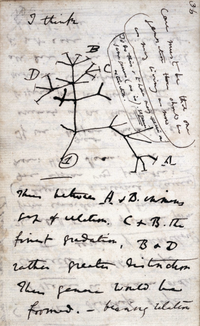
Photo from wikipedia
Pyrethroid insecticides are widely used to control mosquitoes that transmit pathogens such as West Nile virus (WNV) to people. Single nucleotide polymorphisms (SNP) in the knockdown resistance locus (kdr) of… Click to show full abstract
Pyrethroid insecticides are widely used to control mosquitoes that transmit pathogens such as West Nile virus (WNV) to people. Single nucleotide polymorphisms (SNP) in the knockdown resistance locus (kdr) of the voltage gated sodium channel (Vgsc) gene in Culex mosquitoes are associated with knockdown resistance to pyrethroids. RNAseq was used to sequence the coding region of Vgsc for Culex tarsalis Coquillett and Culex erythrothorax Dyar, two WNV vectors. The cDNA sequences were used to develop a quantitative reverse transcriptase PCR assay that detects the L1014F kdr mutation in the Vgsc. Because this locus is conserved, the assay was used successfully in six Culex spp. The resulting Culex RTkdr assay was validated using quantitative PCR and sequencing of PCR products. The accuracy of the Culex RTkdr assay was 99%. The L1014F kdr mutation associated with pyrethroid resistance was more common among Cx. pipiens than other Culex spp. and was more prevalent in mosquitoes collected near farmland. The Culex RTkdr assay takes advantage of the RNA that vector control agencies routinely isolate to assess arbovirus prevalence in mosquitoes. We anticipate that public health and vector control agencies may employ the Culex RTkdr assay to define the geographic distribution of the L1014F kdr mutation in Culex species and improve the monitoring of insecticide resistance that will ultimately contribute to effective control of Culex mosquitoes.
Journal Title: PLoS ONE
Year Published: 2022
Link to full text (if available)
Share on Social Media: Sign Up to like & get
recommendations!